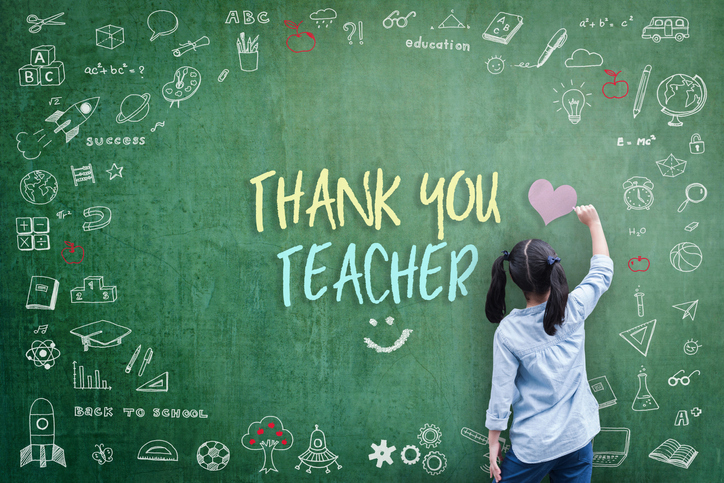Kathleen Stein-Smith believes that we need to shift paradigms in world language education and advocacy
In addition to providing academic and cognitive benefits, knowledge of other languages is a career and workplace asset and global competency, yet the opportunity to learn another language is decreasing just as the demand for world language skills in the workplace and the need for cultural and global skills are increasing.
The demand for language skills in the workplace has doubled in the last five years, and U.S. businesses routinely require foreign language skills and cultural knowledge both globally and locally. However, in the U.S., only 20% of K–12 students study another language, and that number drops to 7.5% at the postsecondary level.
As the world and the workplace have become more globalized, the number of elementary and middle schools offering world languages has dropped from 31% to 28% and from 75% to 58% respectively. Substitutions are readily available even where the language requirement for high school and college graduation is in place. According to the Modern Language Association (MLA), only about half (50.7%) of colleges and universities had a language requirement in 2009–2010, down from 67.5% in 1994–95. Most recently, it has been reported that 651 college world language programs have been lost during the past three years.
It is urgent that language educators, stakeholders, and supporters act to increase the availability of language education. A national campaign, Lead with Languages, was launched in 2017 by the American Council on the Teaching of Foreign Languages (ACTFL), which has a new executive director, Howie Berman, with whom I recently discussed several programs and initiatives, including the Lead with Languages campaign, Language Advocacy Month, Educators Rising, the importance of K–16 collaborations, and a forthcoming survey on the significance of language skills in the workplace.
Language Advocacy Month, launched in 2018 as part of Lead with Languages, is intended to raise public awareness of the importance of world languages, of all the advocacy initiatives taking place across the country, and of recently published research on the importance of language skills.
Educators Rising was created to increase awareness among students of the career opportunities that exist in world language education, to encourage students to consider it as a career choice and specifically to address the shortage of qualified world language teachers. Educators Rising is also an opportunity for teachers to develop a mentoring relationship with the next generation of language educators. Berman also mentioned a scholarship program for high school seniors planning careers in world language education.
The demand for world language skills in the workplace extends well beyond the classroom. ACTFL has recently conducted a comprehensive business survey, the results of which are due to be released soon; preliminary findings show that businesses of all sizes are negatively impacted by the lack of world language skills, and that this not only impacts companies doing business abroad but also businesses operating in multilingual communities in the U.S.
A Paradigm Shift
With the demand for language skills dramatically increasing while the opportunity to learn another language is on the decline, it is of critical importance that all of us support Lead with Languages, the national campaign for foreign languages, Language Advocacy Month (February), other ACTFL initiatives, and Language Advocacy Day, a JNCL-NCLIS initiative.
However, within the context of world languages, advocacy is a broad umbrella, and we can all help in different ways, advocating for a particular language, grade level, methodology, etc. In addition to supporting national, regional, and state associations, most of which have advocacy initiatives in alignment with their organizational goals, we can support the language educators in our local schools and on our nearby college campuses, for example by participating in their events.
In addition to ACTFL, many other organizations at the national, regional, and state levels have developed advocacy groups and initiatives, offering multiple opportunities for involvement.
Faced with the current numbers, a stunning loss of 651 college programs, and a double-digit decrease in world language programs at both the elementary and middle school levels, it is time to consider the future of language learning and the future direction of advocacy.
In addition to supporting organizational advocacy initiatives, world language educators and stakeholders can take on leadership roles, putting their skills—online and in social media, organization, fundraising, public speaking, research, or writing—to work in support of the opportunity for our children and young people to learn other languages and to learn about other cultures. World language educators and advocates, stakeholders and supporters, and communities need to examine ways to confront this issue and to effectively negotiate for funding for existing programs and for development of new ones.
Goals
World language learning brings a broad range of benefits to the learner, to the community, and to our society, and an early start encourages achievement and proficiency. Recent studies have confirmed that, although other languages can be learned later than originally thought, the best time to learn them ends in late adolescence, or around the time that students typically go to college.
Immersion programs have positive impacts on language learning and academic achievement, as well as economic and social benefits.
At the college and university level, interdisciplinary collaborations, double majors, and the development of preprofessional curriculum offer possibilities of building language proficiency across the disciplines.
Partnerships that develop pathways from K–12 foreign language learning to college, and from college and university programs to the workplace, are among the most important collaborations. The opportunity for an early start to world language learning, with pathways to continued study and preprofessional language skills, is needed for all interested students.
Lack of opportunity to learn such a critical skill is an equity issue, and as such becomes more than routine and the responsibility of all of us, possibly even calling for political action—signing an online petition, writing to an elected official or school/institutional decision maker, or making an appointment to discuss the role and significance of multilingualism in our families, our communities, our society, and our world.
Access to language learning is an issue that impacts educators and educational institutions but also our communities and our society, and much of the impetus for the development of immersion programs has come from parents and communities.
Research has shown that world languages bring personal and professional benefits to the individual, and that bilingualism and dual-language education are especially beneficial for low-income children. In addition, if more Americans could hold a conversation in more than one language, communication and understanding within our own society and in our local communities would be improved and potential divisions lessened.
If, indeed, we allow world language programs to be eliminated, and a generation of children and young people grow up without the opportunity to learn an additional language, they will not enjoy the personal, professional, and social benefits of that learning, nor will our communities and our society.
Personal, professional, and political action are all needed—as individuals, through our associations, and united in support of our national campaign, Lead with Languages.
References
https://www.actfl.org/
https://www.mla.org/About-Us/About-the-MLA/About-the-ADE-and-ADFL
https://frenchteachers.org/hq/advocacy.htm
https://nnell.org/
https://languagepolicy.org/
https://www.insidehighered.com/news/2018/03/07/study-finds-sharp-decline-foreign-language-enrollments
https://www.amacad.org/publication/americas-languages-investing-language-education-21st-century
https://www.mla.org/Resources/Research/
Surveys-Reports-and-Other-Documents/Teaching-Enrollments-and-Programs/Enrollments-in-Languages-Other-Than-English-in-United-States-Institutions-of-Higher-Education
https://www.americancouncils.org/news/announcements/new-report-world-language-study-us-k-12-schools
https://research.newamericaneconomy.org/report/not-lost-in-translation-the-growing-importance-of-foreign-language-skills-in-the-u-s-job-market/
https://www.tbr-books.org/product/the-gift-of-languages/
https://www.mla.org/Resources/Research/Surveys-Reports-and-Other-Documents/Teaching-Enrollments-and-Programs/Data-on-Second-Majors-in-Language-and-Literature-2001-13
https://www.mla.org/Resources/Research/Surveys-Reports-and-Other-Documents/Teaching-Enrollments-and-Programs/The-MLA-Survey-of-Postsecondary-Entrance-and-Degree-Requirements-for-Languages-Other-Than-English-2009-10
https://www.actfl.org/advocacy/what-the-research-shows
http://webapp.cal.org/Immersion/
https://carla.umn.edu/immersion/documents/ImmersionResearch_TaraFortune.html
http://news.mit.edu/2018/cognitive-scientists-define-critical-period-learning-language-0501
Kathleen Stein-Smith, PhD, Chevalier dans l’Ordre des Palmes académiques, is associate university librarian and adjunct faculty in foreign languages and related areas at Fairleigh Dickinson University–Metropolitan Campus, Teaneck, New Jersey.
As a dedicated foreign language educator and advocate, she is chair of the AATF (American Association of Teachers of French) Commission on Advocacy. She is a member of the ATA (American Translators Association) Education and Pedagogy Committee, the CSCTFL (Central States Conference on the Teaching of Foreign Languages) Advisory Council, and the NECTFL (Northeast Conference on the Teaching of Foreign Languages) Advisory Council, and is a SCOLT (Southern Conference on Language Teaching) Sponsor. She also serves as French language facilitator at MLOW (Many Languages, One World).
She has presented at numerous professional conferences, is the author of three books and numerous articles about the foreign language deficit, has given a TEDx talk, “The U.S. Foreign Language Deficit—What It Is, Why It Matters, and What We Can Do about It,” and maintains a blog, “Language Matters.”












